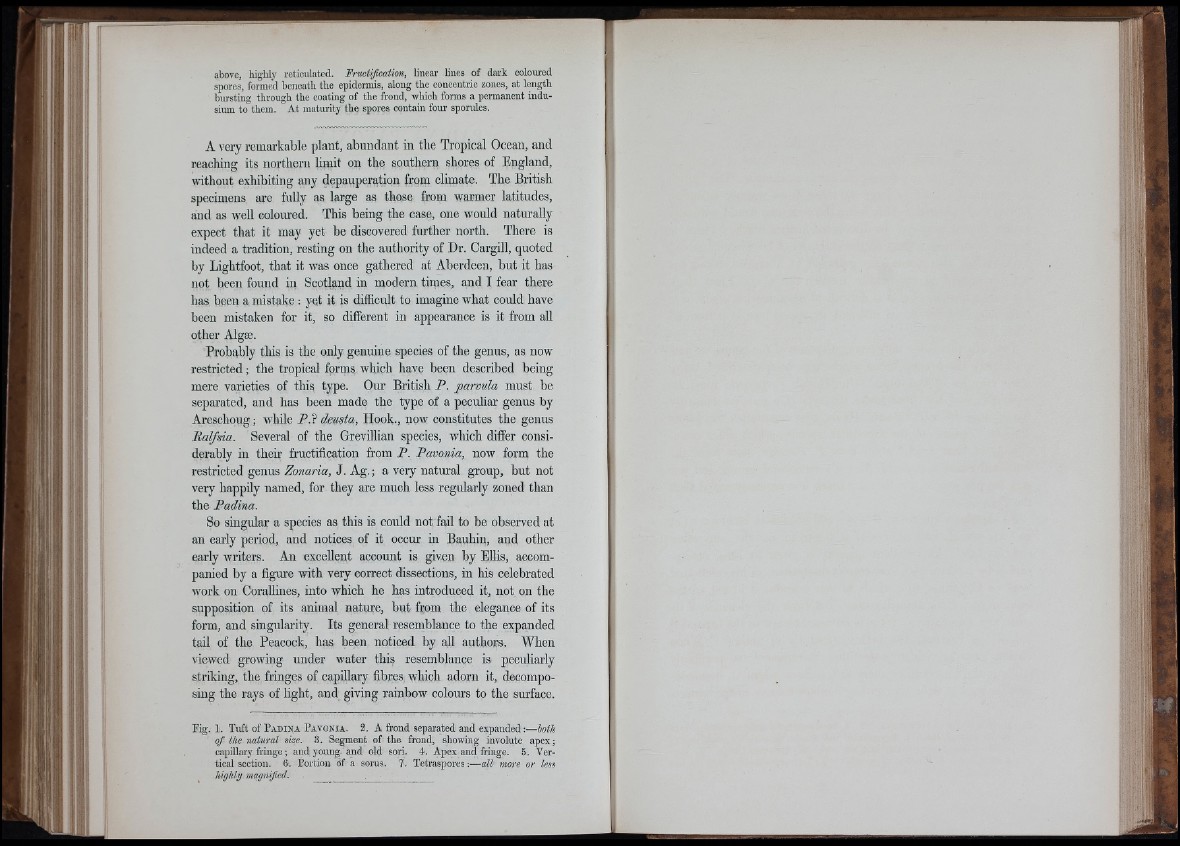
above, highly reticulated. EructiJicaUon, linear lines of dark coloui-ed
spores, formed beneath the epidermis, along the concentric zones, at length
bursting through the coating of the fi-ond, wliich forms a permanent indu-
shun to them. At maturity the spores contain fom- sporules.
A very remarkable plant, abundant in the Tropical Ocean, and
reaching its northern limit on the southern shores of England,
without exhibiting any depauperation from climate. The British
specimens are fully as large as those from warmer latitudes,
and as well coloured. This being the case, one would naturally
expect that it may yet be discovered further north. There is
indeed a tradition, resting on the authority of Dr. Cargill, quoted
by Ligbtfoot, that it was once gathered at Aberdeen, but it has
not been found in Scotland in modern times, and I fear there
has been a mistake ; yet it is difficult to imagine what could have
been mistaken for it, so different in appearance is it from aU
other Algas.
Probably this is the only genuine species of the genus, as now
restricted; the tropical forms which have been described being
mere varieties of this type. Our British P. parvula must be
separated, and has been made the type of a peculiar genus by
Areschoug; while P.? deusta. Hook., now constitutes the genus
Bal/sia. Several of the Crevillian species, which differ considerably
in their fructification from P. Pavonia, now form the
restricted genus Zonaria, J. Ag.; a very natural group, but not
very happily named, for they are much less regularly zoned than
the Padina.
So singidar a species as this is could not fad to he observed at
an early period, and notices of it occur in Bauhin, and other
early writers. An excellent account is given by Ellis, accompanied
by a figure with very correct dissections, in his celebrated
work on Corallines, into which he has introduced it, not on the
supposition of its animal nature, but from tbe elegance of its
form, and singularity. Bs general resemblance to the expanded
tail of the Peacock, has been noticed by all authors. When
viewed growing under water this resemblance is peculiarly
striking, the fringes of capillary fibres which adorn it, decomposing
the rays of light, and giving rainbow colom-s to the surface.
Fig. 1. Tuft of P a d in a P a v o n ia . 3. A frond separated and expanded:— lofh
o f the natural size. 3. Segment of the frond, showing involute apex;
capiUary fringe; and young and old sori. 4. Apex and fringe. 5. Vertical
section. 6. Portion of a sorus. 7. Tetraspores:— all more or less
highly magnified.
Hi